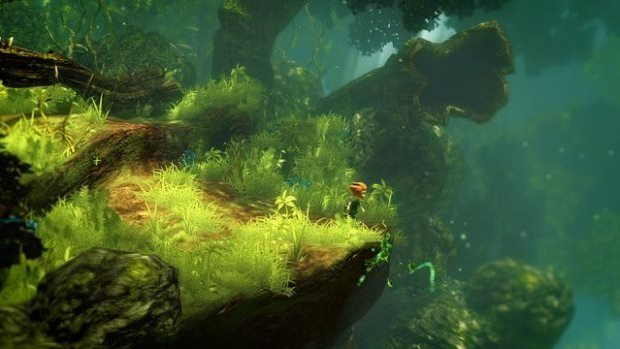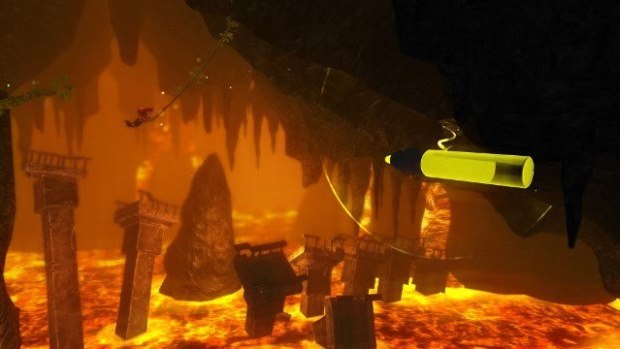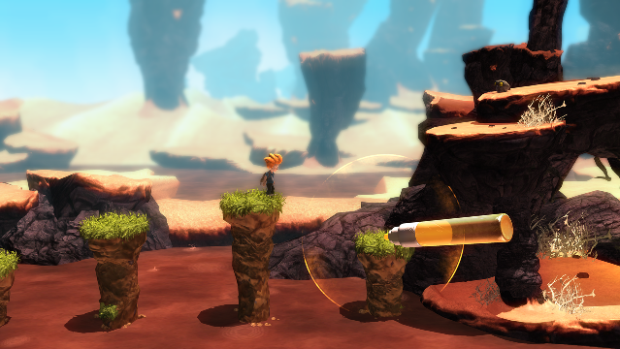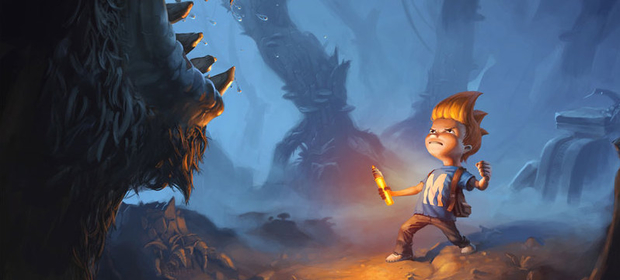Max & the Magic Marker was released with little fanfare back in early 2010. A platform title for home computers, iOS and even the Nintendo Wii and DS, the title saw gamers take on the role of the protagonist Max, who unwittingly unleashes a monster with a magic marker that he finds. Said marker can also magically create platforms and ropes, and Max uses these new talents to defeat the monster.
Flash forward three years and developers Press Play have brought the spiritual sequel to Xbox One via XBLA. This time around, Max – irritated by his younger brother Felix – unwittingly sends him through a portal to Anotherworld, a dangerous land ruled by the evil Moustacho. Max once again must equip his trusty magic marker, defeat the villain and save his brother.

Unlike the first game that was set almost entirely within the pages of Max’s cartoon drawings, the fact that both he and his brother now find themselves in this alternate dimension allows for much more creativity and variety in the stages on offer. The game instantly becomes a fantasy platformer, rather than its somewhat simple predecessor. In fact, this eerie, mysterious setting gives the game a rather Limbo-esque style at times – and the title absolutely feels much more serious from the off. It is packed with atmospheric touches both in its visuals and audio, as well as having a lot of character packed into its little on-screen sprites.
The main crux of the game is the marker mechanic, with which Max can draw platforms, branches, vines, fireballs and jets of water – all of which need to be manipulated and combined in order to defeat enemies and successfully navigate the environments. To do this, you use the right stick to draw lines and drag the marker across the screen, using the A button to create objects and the X button to delete or destroy them.
All the different elements link together, so you can create vines that attach to pillars and swing from branches, then you can chop down branches and push them around the stages – using them as stepping stones or bridges, for instance. Large parts of the levels are as much about puzzles game as they are about platforming, asking you to work out the correct way to approach a situation and how to employ your skills.

The fact that each puzzle requires you to create items and work out how to overcome the obstacle makes each playthrough feel very personal – even if each situation only has one or two different solutions. Through drawing items by hand, it means that no two games will ever be identical, and the way you tackle a level will be ever-so-slightly unique. This results in the overall puzzle-solving being quite a rewarding technique, where successful attempts are pretty satisfying. They will all make you flex your grey cells, and also test your platforming nous.
There are also many enemies to be avoided or defeated, although Max never kills any of them in the traditional jump-on-your-head manner. Mostly he must use the environment to get around them, but other methods include constructing ways of trapping the bad guys, or getting them to fight each other. There are also occasional chase stages, where you have to run away from a massive enemy through a level, which require some quick-thinking to avoid an ill fate. Luckily, the most split-second decisions have a slow-down effect applied to them, so that you can still draw something to save your hide, even when the enemy is right on top of you.
Along with the creative level structure, the title is also well-designed visually. The backgrounds are lush and detailed, making full use of the high-resolutions afforded by the power of the Xbox One, even though the game is a simple one on the surface. The art style may not be revolutionary, but the fully-animated cutscenes and the detailed character animations give the game a living carton feel, and the result is very polished overall. The musical score is also worth mentioning, wheeling from Danny Elfman-like fantastical melodies, to creepy underground ambiance and bombastic chase themes, each piece is well-suited the action on-screen.

The only real downside is that the marker controls aren’t perfectly-suited to a gamepad. That isn’t to say that it is broken, but the idea of quickly drawing lines or objects just suits a touch-screen or motion control interface more naturally. It is strange then, that Press Play didn’t try to integrate Kinect into proceedings at all. Even though the game started life as an Xbox 360 exclusive, Kinect would have been available for that version too – and surely drawing objects with the wave of an arm would have been an interesting addition.
Nevertheless, Max doesn’t fall down based on the control method. It is true that in certain situations – particularly on later levels where action gets more hectic and a quick stylus stroke would definitely be more effective than using the control pad – the system feels almost too slow. This can lead to some frustrating sections, but all of the puzzles are solvable with a little trial an error, and even the trickier ones shouldn’t keep you stumped for long, as voice-over prompts and glowing lines often appear to guide the way.
Despite its relatively low price tag, the game contains a fair bit of content, especially once you think of the variety of secrets and collectibles scattered around to locate. There are five different worlds, with three or four stages set across each one, and each has its own personality and allows both Max and the player to learn new skills as they progress, until they have to start combining all of them to successfully clear the final stages.

VERDICT: Max: The Curse of Brotherhood oozes personality in both its design and gameplay. Sure, the idea of drawing your way out of puzzles is no longer a completely original one, but Max has puzzles that are so cleverly designed and fun to play through, that you forget this fact and focus on the fun you have solving each conundrum.
The difficulty curve is forgiving, although it does ramp up a little more toward the climax, but it never gets close to the levels of irritation that platform games of old managed. The control input method may be difficult for some, but once you get used to it, it becomes second nature and even the fastest sections won’t be too demanding. Max may have been sneaked out earlier than we expected, but it’s a little gem that could easily be over-looked, but will reward gamers who invest their time in it.

VERY GOOD. An 8/10 is only awarded to a game we consider truly worthy of your hard-earned cash. This game is only held back by a smattering of minor or middling issues and comes highly recommended.
Review code provided by publisher.







